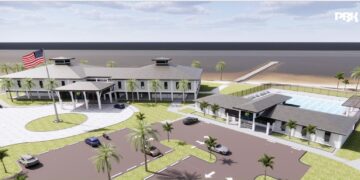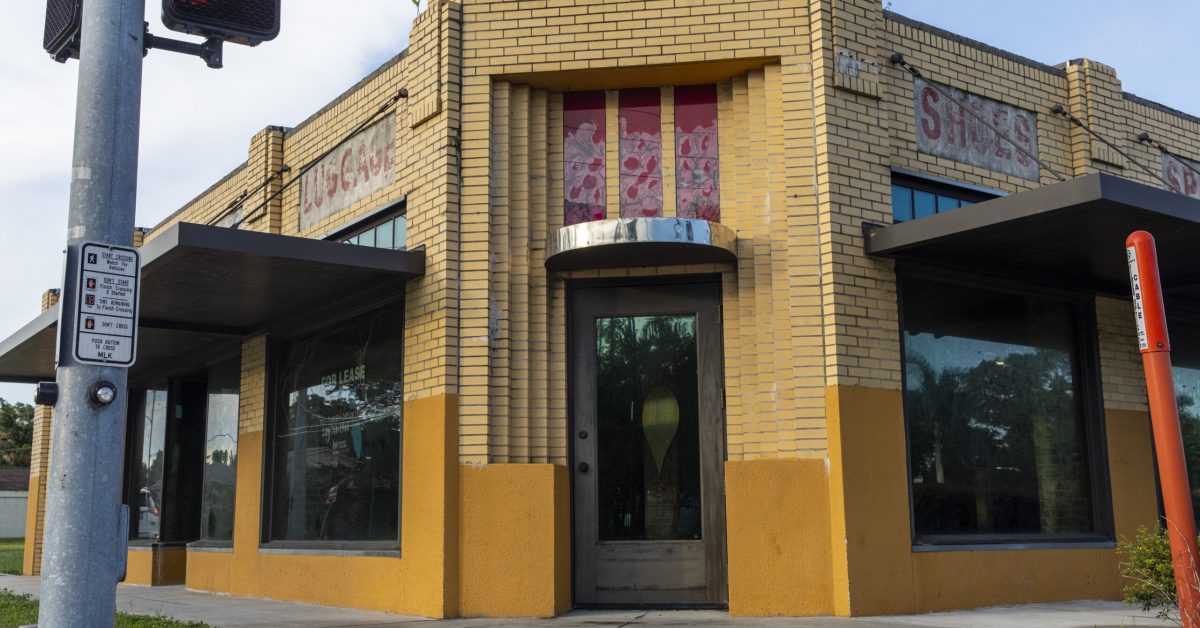Fort Myers Community Redevelopment Agency cut ties with Fort Lauderdale-based Alexander Goshen, ending the firm’s plans to partner on restoring McCollum Hall.
Now, the CRA and the city plan to fund and complete the restoration of the 1938 Art Deco landmark themselves. While the two operate as separate entities with different budgets and staff, the CRA Board and City Council consist of the same members.
Acting as the City Council on July 28, members directed staff to end the city’s relationship with the developer and make the yellow brick building a CRA project. Then, sitting as the CRA Board on Aug. 11, they voted unanimously to notify Goshen and company that they were removed from the project. Council member Terolyn Watson, who opposed ending the partnership, was absent.
CRA attorney Clifford Shepard said Goshen is in default of its agreement because the firm didn’t meet deadlines on starting the project and wasn’t able to obtain financing.
“They have missed a couple of important milestones,” Shepard said. “That’s the long and the short of it. There have been a number of milestones blown through despite extension given.”
Previously, Council voted to help Goshen with $4.2 million in funding through the CRA. The project was expected to cost $10.4 million.
Miles Alexander of Alexander Goshen also agreed to invest $910,000 of his own money. Alexander plans to challenge the CRA’s decision in court.
“I am extremely upset and blindsided by the actions of the Council, the administration and the CRA staff,” he said at the Aug. 11 meeting. “The claims that they have made against [Alexander Goshen] are false. They claimed we don’t have the funds. That is totally false.”
Alexander said his company asked the city for a reimbursement grant, which would indicate that they had the funds available first.
“We have also several times asked to withdraw the $4.2 million request,” he added. “And now I see they are using that as a pretext to take McCollum Hall back.”
Now, financing for the project is expected to come both from the city’s budget and through the CRA’s trust, which is funded by tax increment revenue. The CRA is exploring public and private funding, its website states.
After the meeting, Fort Myers Mayor Kevin Anderson noted that the project has been in the works for 15 years and has been through three potential developers.
“No more,” he said. “We’re going to fix it. We’re going to make it happen.”
McCollum Hall has a rich history rooted in the Dunbar community, a historically Black neighborhood in Fort Myers. It was built by local businessman Clifford “Buck” McCollum Sr. in 1938 at the corner of Dr. Martin Luther King Jr. Boulevard and Cranford Avenue and is now on the National Register of Historic Places. Its second floor once hosted performances by prominent musicians, such as Duke Ellington.
The Fort Myers CRA, with its mission to redevelop blighted property throughout the city, acquired McCollum in 2008. It has spent $2.8 million on the building in the past 15 years, CRA Director Michele Hylton-Terry said at a January workshop. A state grant paid for the outside restoration in 2016, but several attempts to restore the inside have failed.
Reviving McCollum is a key part of the CRA’s plan for broader improvements in the Dr. Martin Luther King Jr. corridor.
“We will be working in alignment with the city [on McCollum Hall] and continuing the internal coordination to take next steps thoroughly, transparently and in the best interest of the community,” wrote CRA Deputy Director of Communications LaShaun Collier.
The next steps include finding an architect for the project and hosting a community meeting to firm up development plans, council member Teresa Watkins Brown said. Previous efforts planned for a mix of restaurants and retail with apartment buildings next door.
“This won’t be delayed,” Watkins Brown said. “We don’t want the community to have to wait on another developer.”





